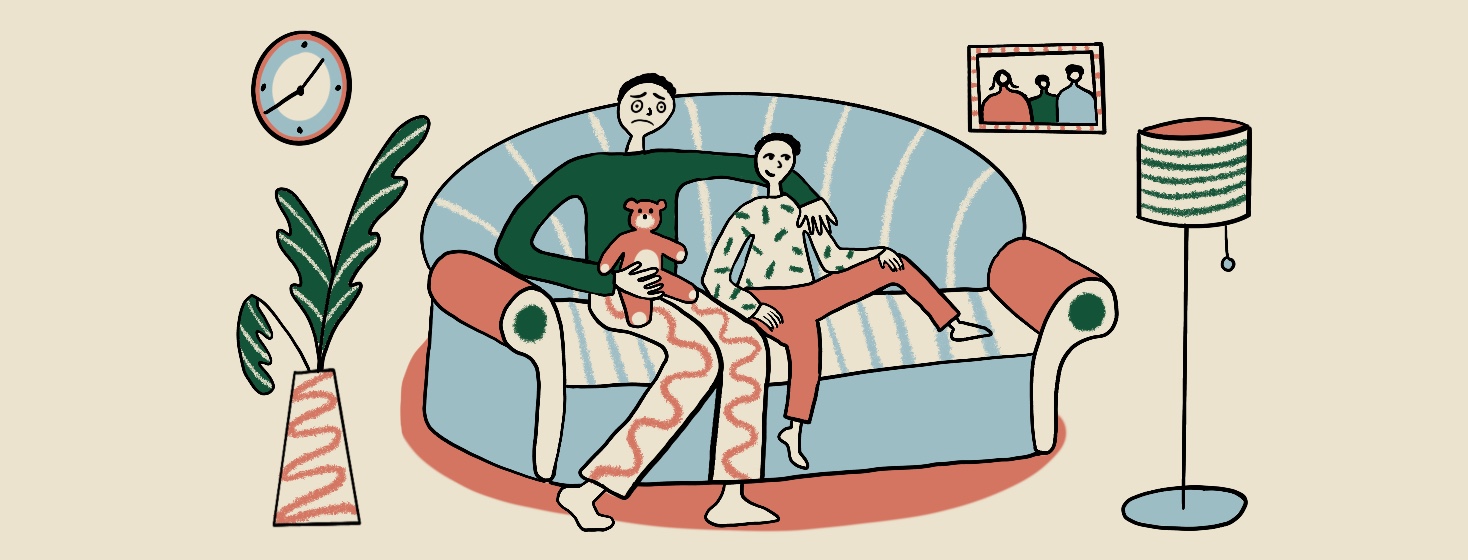What Is Lennox-Gastaut Syndrome?
Reviewed by: HU Medical Review Board | Last reviewed: March 2022 | Last updated: October 2025
Lennox-Gastaut syndrome (LGS) is a rare and severe form of epilepsy that begins in childhood. LGS often causes learning problems and developmental delays. There is no cure for LGS, but several treatments are available to help control seizures.1-3
What causes Lennox-Gastaut syndrome?
Most of the time, LGS has a known cause. This is called symptomatic LGS. Causes are varied but can include:1-3
- Problems with brain development
- Serious head injury
- Stroke
- Decreased oxygen to the brain
- Brain tumor
- Brain infection
- Rare genetic diseases
In the remaining cases, LGS has no known cause. These cases are called cryptogenic or secondary LGS. Usually, these cases appear later in life than those with known causes.1
Who gets LGS?
LGS is a rare form of childhood epilepsy. LGS affects about 2 to 5 out of every 100 children with epilepsy. It is more common in boys than girls. LGS starts between the ages of 2 and 7.1,3
What are the symptoms of LGS?
People with LGS have different types of seizures, including:1-3
- Atypical absence, which causes a person to suddenly stop what they are doing and stare into space for a few seconds
- Tonic, which causes the body to become stiff and the arms and legs to jerk
- Atonic, which cause the body to become limp and collapse
- Other types, such as:
- Complex partial seizures
- Generalized tonic-clonic seizures
Behavioral issues are common in LGS, including:1-3
- Hyperactivity
- Restlessness
- Aggression
- Autism
Many people with LGS have at least 1 episode of status epilepticus, a seizure emergency. Status epilepticus can be either nonconvulsive (staring, decreased attention) or convulsive (muscle stiffening and jerking). It is a medical emergency and requires rapid first aid and treatment.3
Diagnosing LGS
Your child’s doctor will perform a complete physical exam. They will focus on the brain and nerves (a neurological exam). The doctor will ask about symptoms and past medical history. The doctor will order some tests as well.1-3
For LGS to be diagnosed, a triad (3 symptoms) must be present:1
- Multiple seizures of different types
- Distinctive electroencephalogram (EEG) pattern
- Some degree of learning and behavioral problems
An EEG helps your doctor learn more about your child’s epilepsy. An EEG is a painless test to measure electrical activity in the brain (brainwaves). Even when people with certain types of epilepsy are not having a seizure, their brainwaves may display unusual patterns. EEGs can be done:4,5
- In a hospital
- At home
- In a doctor's office
Additional testing might also be needed, such as magnetic resonance imaging (MRI) and blood work or labs.1-3
Treatment
LGS can be hard to treat, so a team of experts is needed to find the best option for each person. Treatment options include:1
Anti-seizure drugs
Prescription anti-seizure drugs are usually the first treatment for epilepsy. There are many different options, and each one has risks, benefits, and side effects. Your child’s doctor will discuss which drugs will be best.1-3
Surgery
Some people with LGS may benefit from surgery, especially when other treatment has not been successful. The most common surgeries for LGS include:1
- Corpus callosotomy, which surgically cuts the nerve connection (corpus callosum) between the 2 halves of the brain. This might be helpful for those whose seizures start on 1 side of the brain and spread to the other side.
- Vagus nerve stimulation, a procedure where a device is surgically implanted in the chest. Similar to a pacemaker, the device sends mild electrical impulses to the vagus nerve in the neck. These impulses help the brain block certain seizures from occurring.
Diet
In some people with LGS, a ketogenic (keto) diet may help to decrease seizure activity. The keto diet is a high-fat, low-carbohydrate diet that causes the body to burn fat instead of sugar (glucose). It is a demanding diet that requires strict adherence and commitment.1,3
The ketogenic diet has possible side effects, and people who follow the diet should be closely monitored by their doctors. How well the diet works differs from person to person. Doctors are still unclear about why the diet is effective in treating seizures. They also do not know why it works for some people but not others.1,3
Your child will likely need changes in their treatment plan as they get older and their seizures change. The treatment that works now might not work later on. There is currently no cure for LGS. However, anti-seizure drugs, diet therapies, and surgical and other treatments offer hope for those with LGS.1-3
